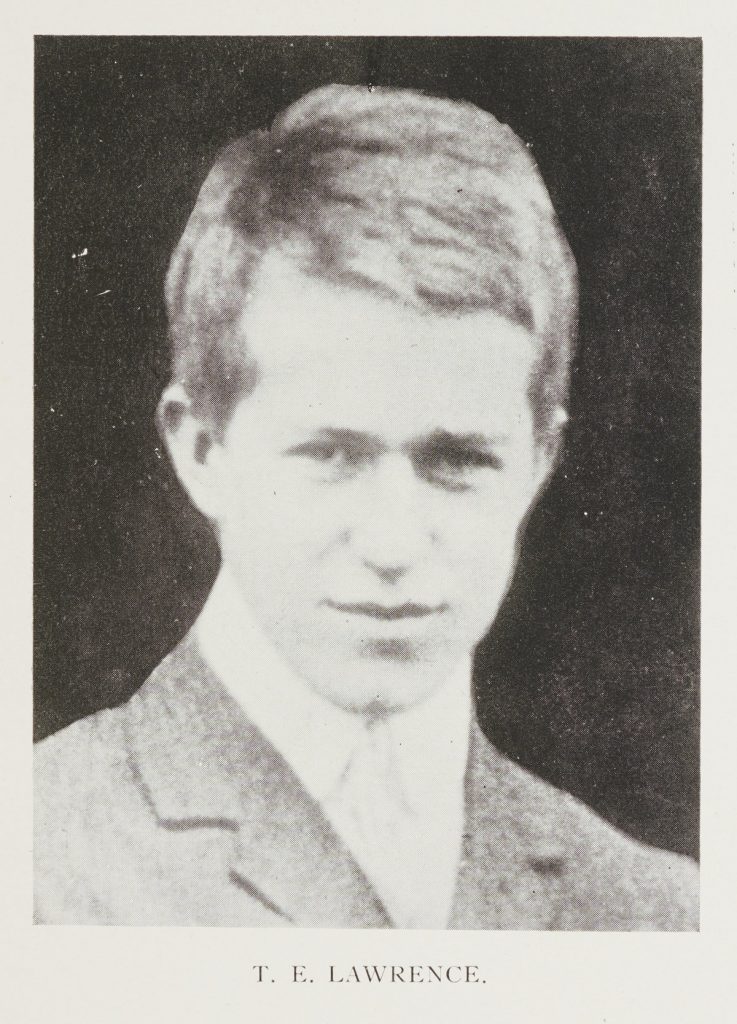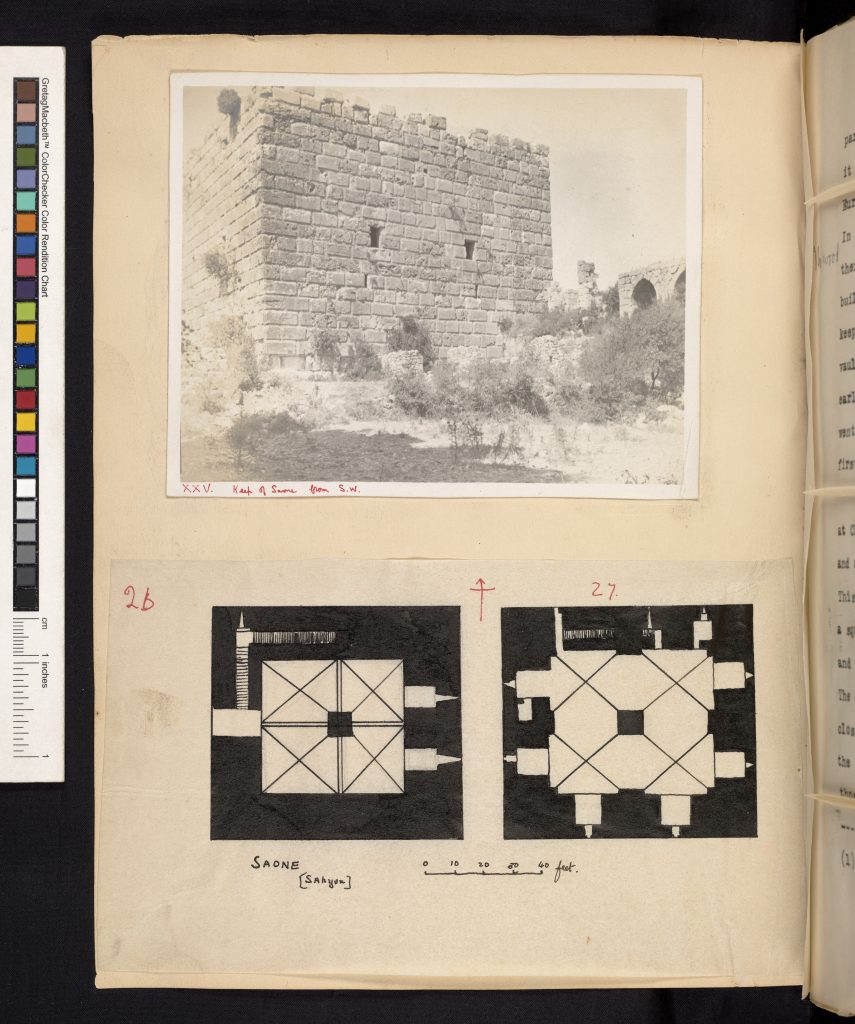The medieval and early modern manuscripts owned by Jesus College date back to the 11th century.
They have been on deposit in the Bodleian Libraries since 1886 and thus appointments to consult manuscripts with numbers between 1 and 150 should be made at the Weston Library.
The most recent catalogue is the second volume of Coxe’s Catalogus codicum MSS. qui in collegiis aulisque Oxoniensibus hodie adservantur (1852); brief entries for pre-1601 manuscripts are also available in the Bodleian’s online catalogue of Medieval Manuscripts in Oxford Libraries where you can order them for consultation in the Weston Library. An annotated version of Coxe’s catalogue is held in the Library Office. (MS. 146 is catalogued in Ker’s Medieval manuscripts in British libraries.) Modern manuscripts numbered 151 and above, including T.E. Lawrence’s undergraduate thesis (MS. 181), are held in the College Library and the Archives.
Two of our treasured manuscripts, the Red Book of Hergest and T.E. Lawrence’s thesis on Crusader Castles, are described below, and there are a number of posts about the manuscripts on the Jesus College Libraries blog. We are continuing to digitise our manuscripts and to make the images freely available on Digital Bodleian.
‘The influence of the Crusades on European military architecture to the end of the XIIth century’ (Jesus College MS. 181)
Thomas Edward Lawrence was born in Tremadog in North Wales in 1888 and moved to North Oxford with his family in 1896. His birthplace in Wales qualified him for a Meyricke Exhibition (scholarship) at Jesus, and he came up to read Modern History in October 1907.
Lawrence spent the summers of 1906, 1907, and 1908 crossing France on his Oxford-made Morris bicycle, recording medieval castles and fortifications. New regulations gave history students the option of submitting a thesis on one of their special subjects and so Lawrence discussed his survey with C.F. Bell, Assistant Keeper of the Ashmolean Museum, who suggested a comparison with the castles built by Crusaders in the Middle East.
In the summer vacation of 1909, Lawrence arrived in Beirut, intending to walk through Syria and Palestine. After heading south through Galilee, he visited Aleppo, Urfa (Edessa), and Damascus. He reached Crac des Chevaliers, which he called ‘the finest castle in the world, certainly the most picturesque’, on 16 August, his 21st birthday.
Lawrence completed his thesis in the winter of 1909–10. Despite the theft of his camera in Syria, it incorporates numerous original photographs as well as plans, sketches, and postcards. Submitted for the Final Honour School of Modern History in July 1910, the thesis was marked ‘most excellent’, and in the words of one of the examiners, it made ‘safe but slight’ what was ‘otherwise a not very exciting First’. Moreover, Lawrence’s achievement undoubtedly earned him the patronage of D.G. Hogarth, Keeper of the Ashmolean.
Lawrence continued his archaeological work in Syria until, on the outbreak of the First World War, he was recruited by military intelligence. He earned the sobriquet ‘Lawrence of Arabia’ through his encouragement of the Arab insurgency against the Ottoman Turks, described vividly in his memoir Seven Pillars of Wisdom. It is ironic, in the light of Lawrence’s own guerrilla activities, to read his complaint in the thesis about the Bedouin destruction of the Hejaz railway. After the war, Lawrence enlisted in the Royal Air Force under an assumed name. He died in May 1935, losing control of his motorcycle on a country road.
The following year, Lawrence’s youngest brother Arnold, acting as his literary executor, arranged for his thesis to be published by the Golden Cockerel Press in a limited edition of 1,000 copies under the title Crusader Castles. Then, in 1939, this typescript was presented to Jesus by Lawrence’s mother and elder brother. It is the examiners’ copy of the thesis, returned to Lawrence ‘for the sake of the illustrations’, and with his subsequent annotations: for instance, excusing his limited inspection at Saone (Sahyun) with the comment ‘I had malaria rather heavy those days’.
The first mass-market edition was published by Michael Haag in 1986 (reprinted 1992), followed by the Oxford University Press edition in 1988, and most recently the Folio Society in 2010. The Golden Cockerel and Haag editions go so far as to reproduce Lawrence’s marginal notes in the Jesus copy of his thesis; the OUP edition reproduces only some of those notes, but is more readily available.
Two facsimile copies were produced in 2017, printed by Scriptura, bound by Victoria Stevens, and housed in a custom archival box made by Arca Preservation, and one is kept on display for visitors to the Fellows’ Library. Researchers who need to see the original typescript may apply to the College Librarian for an appointment, while other interested readers can see it on Digital Bodleian.
The Red Book of Hergest (Jesus College MS. 111) is a renowned collection of medieval Welsh literature. It has been called one of the ‘Four Ancient Books of Wales’.
Written on vellum around 1400, the Red Book is a vast anthology of Middle Welsh literature. It contains the magical tales of the Mabinogion, the legendary history of the Kings of Britain, the works of the Poets of the Princes, and the herbal remedies of the Physicians of Myddfai.
Three scribes collaborated to produce the book for their patron Hopcyn ap Tomas ab Einion, of Ynysforgan near Swansea. It later passed to the Vaughan family of Hergest Court on the English border, and it was here, in the 16th century, that it was first described as Llyfr Coch Hergest, the Red Book of Hergest (although the current vibrant red binding dates from 1851; there was also a White Book of Hergest, since lost).
In the 17th century, the Red Book belonged to the Reverend Thomas Wilkins, who had studied at Jesus College, and in 1701 his son presented it to Jesus, at a time when there were no public libraries nor universities in Wales to receive it.
The Red Book had pride of place in the gilt-fronted manuscript cupboards in the Fellows’ Library until 1886, when the College decided to deposit it in the Bodleian Library so that scholars could access it more easily. Since then, most of the texts in the Red Book have been edited and published (and in some cases translated into English). Today, researchers who need to see the original manuscript can apply to Bodleian Special Collections, while other interested readers can see it on Digital Bodleian.
You may reuse digital images from the Libraries’ collections, in particular images hosted on Digital Bodleian, under a Creative Commons Attribution (CC-BY 4.0) licence, unless otherwise stated. Please include the permalink and an appropriate citation. You do not need to request permission, but in case of enquiries, please contact librarian@jesus.ox.ac.uk
Researchers consulting Jesus College manuscripts in the Weston Library may take photographs for the purposes of private research and study according to the Bodleian Libraries’ regulations, provided that copyright and/or publication right in the images is assigned to the College; we will then apply a Creative Commons licence enabling you to reuse the images. The same condition applies for photographs of early printed books in the Fellows’ Library.
Twenty of Jesus College’s Welsh manuscripts were catalogued by J. Gwenogvryn Evans for the Historical Manuscripts Commission. MSS. 15, 16, 17, 20, 22, 23, 28, 57, 61, 88, 90, 101, 111, 112, 119, and 137 to 141 are described in pages 1-90 of Report on manuscripts in the Welsh language. Volume II. Part I (London: H.M.S.O., 1902).
Facsimiles of fifteen of these manuscripts are available at Digital Bodleian. Please see the copyright notice there for information on reproducing images from our special collections. Finally, MSS. 20, 57, 111, and 119 have been edited for Welsh Prose 1300-1425.


